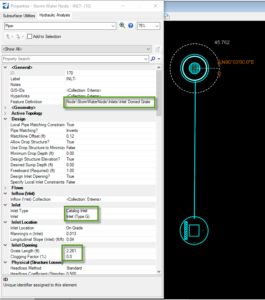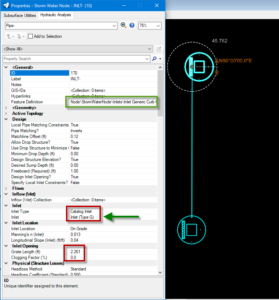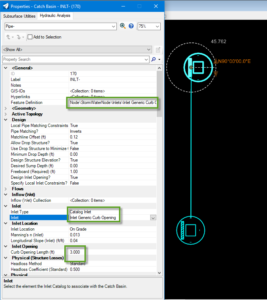Tools built using Bentley’s OpenRoad Technology include the ability to leverage drainage and utility design tools incorporated into civil products. The Subsurface Utility Design and Analysis (SUDA) functionality included with OpenRoads Designer CONNECT Edition utilizes component “catalogs” to store hydraulic properties for various nodes and conduits. These catalogs are referenced by the prototypes assigned to the feature definitions used by designers. The information and properties used by the hydraulic analysis engines are added to nodes and conduits as set in these catalogs during creation, hence the notion of a prototype. Additional manipulation to the hydraulic analysis properties of the feature are instance-specific, that is, changes apply only to the node or conduit being edited. A by-product of this flexibility is that a link between the “physical model” defined by the Feature Symbologies and the “analytical model” defined by the prototype in the Feature Definition does not remain dynamic. This manifests itself most prominently when a node or conduit is changed from one Feature Definition to another. The change will propagate through the physical model, but not impact the analytical model.

Initial Design
If the design is updated by assigning a new feature definition, the properties in the analytical model are not updated to reflect that change. In this instance, we move from a grated inlet to a curb opening inlet.

Altered, Errant Design
To realign the hydraulic analysis properties to the newly selected Feature Definition, the user will need to specify a new catalog entry, in this case changing from the “Inlet (Type G)” to the “Inlet Generic Curb Opening” within the referenced Inlet Catalog.

Corrected Design
This action should trigger an updated to the new catalog inlet properties, in this case removing the grate length and clogging factor associated with the first inlet and adding the single opening parameter “Curb Opening Length” associated with an opening inlet. It is incumbent upon the designer to confirm that other changes made in this process did not overwrite desired settings and all needed changes have been completed.
This process is preferable to other options including stepping through each line and updating values due to the potential of input errors, or removing and replacing the node, as this will impact attached conduits and developed profile runs.
